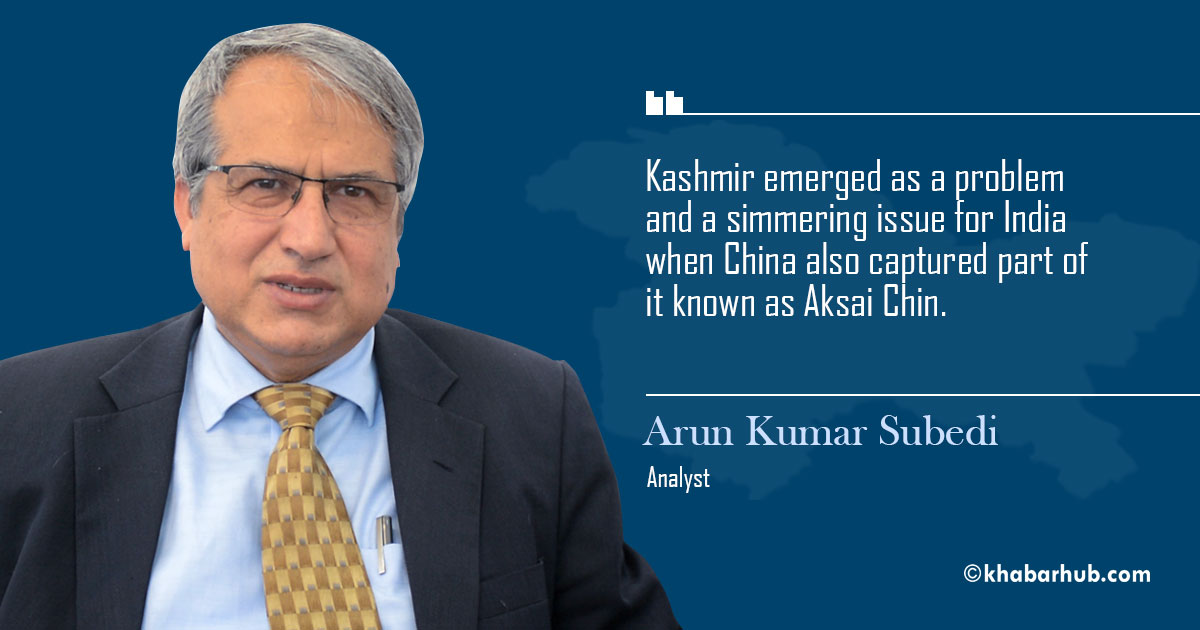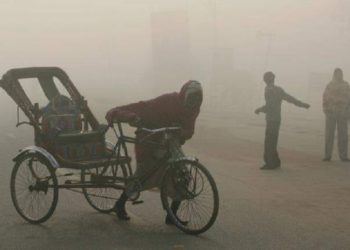Kashmir which emerged as a bilateral issue between India and Pakistan right after when two countries were made independent by India Independence Act 1947. India Independence Act 1947 passed by the Parliament of the United Kingdom (UK) that divided British India into two new independent dominions of India and Pakistan.
The Act received the assent of the royal family on July 18, 1947, after which, India came into existence on August 15 and Pakistan on August 14 in the year 1947. The Act was formulated together by UK Prime Minister Clement Attlee and the Governor-General of India Lord Mountbatten after the representatives of the Indian National Congress, the Muslim League, and the Sikh community gave their consent to the Act.
At the time when the British handed over the power by creating two states India and Pakistan, Maharaja Hari Singh, the ruler of the princely state of Kashmir preferred to remain independent and observe neutrality amid the enmity between India and Pakistan created on religious line – India for all as it remains and Pakistan for Muslims.
This act came to be known as the 3 June Plan or Mountbatten Plan. On February 20, 1947, Clement Attlee, the then Prime Minister of the UK, made an announcement that British India would be granted full self-government rights by June 1948.
He also stated that as soon as the date of the final transfer is confirmed, the future of the princely states will be decided. At the time when the British handed over the power by creating two states India and Pakistan, Maharaja Hari Singh, the ruler of the princely state of Kashmir preferred to remain independent and observe neutrality amid the enmity between India and Pakistan created on religious line – India for all as it remains and Pakistan for Muslims.
Muhammad Ali Jinnah who served as the leader of the Muslim League and hailed as the creator of Pakistan by holding on to sectarian divisive agenda in united India became the first Governor-General of Newly created Pakistan.
Inspired by his sectarian thought and motivated by the exploits of early Muslim invaders in India in the medieval times, Muhammad Ali Jinnah revered as Quaid-i-Azam (Great Leader) and Baba-i-Qaum (Father of Nation) in Pakistan allowed the raiders and infiltrators from his land of Pakistan, Khyber Pakhtunkhwa (Northwest Frontier Province) to annex the princely state of Kashmir to Pakistan by force.
The Independent state of Kashmir was being ruled by Maharaja Hari Singh then. Maharaja Hari Singh was shaken when he came to know in the morning of October 22, 1947, that his forces in Muzaffarabad were overrun and slaughtered by rampaging raiders’ tribal hordes from the North-West Frontier Province (NWFP – now Khyber Pakhtunkhwa) with the active support of newly created Pakistan.
The Pakistani raiders were marching to Sri Nagar and this was the time Maharaja Hari Singh decided to accede to India on October 26, 1947, in order to prevent mass slaughtering of his subject. Next morning on October 27, the first battalion of Sikh Regiment of Indian military reached Sri Nagar and foiled the attack. However, by then part of Pakistan (known as Gilgit-Baltistan today) was captured by Jinnah’s Pakistan.
The Kashmir emerged as a problem and a simmering issue for India when China also captured part of it known as Aksai Chin. India claims Aksai Chin as a part of the Ladakh region. In 1962, India and China fought a brief war but in 1993 and 1996 the two countries signed agreements to respect the Line of Actual Control.
Aksai Chin covers an area of about 37,244 square kilometers (14,380 sq mi). To complicate the matter even further and to bring China by its side against India, Pakistan gave part of its occupied Kashmir popularly known as Shaksgam Valley (an area of more than 2,700 sq. mi or 6,993 km2) to China. The entire region of Shaksgam Tract is claimed by India as part of the state of Jammu and Kashmir.
Kashmir issue which gradually emerged as the flashpoint of possible major armed conflict and a hotbed of terrorism particularly during Sheikh Abdullah administration threatened entire South Asian region and whole of India with Islamic terrorists being actively supported by Pakistan. With China also occupying part of it, the erstwhile princely state of Kashmir is shared among three countries now India, China, and Pakistan.
Basically, India being a continent (also known as sub-continent) in itself and a source of powerful Sanatan Vedic Civilization from time immemorial have observed several other streams of culture and molded them in her own. Many countries in due course of time have taken birth from India. Pakistan is the latest one if Bangladesh as eastern Pakistan is discounted.
Maharaja Hari Singh who wanted to save Kashmir became the target of attack from Mohammed Abdullah Sheikh (popularly known as Sheikh Abdullah) who began to foment separatist movement in Jammu & Kashmir rooting for self-rule in the region. He founded his own political party called ‘All Jammu & Kashmir Muslim Conference’ (now People’s Conference).
He served as the 2nd Prime Minister (first being Mehr Chand Mahajan) of Jammu & Kashmir after its accession to India in 1947 and was later jailed and exiled due to his fundamentalist views and pro-Pakistan activities. He was dismissed from the position of Prime Minister of J&K on 8 August 1953.
The expressions ‘Sadar-i-Riyasat’ and ‘Prime Minister’ were removed because J&K was one of the provinces of India and new designations such as ‘Governor’ and ‘Chief Minister’ came into vogue from 30 March 1965.
Loc and LAC
Two wars with Pakistan (1965 and 1971) and one with China (in 1962) didn’t benefit India much in solving raging Kashmir problem except creating LoC (Line of Control) with Pakistan and LAC with China. The term Line of Control (LoC) refers to the military control line which separates Indian province of J &K from POK (Pakistan occupied Kashmir now Gilgit-Baltistantan).
It serves as the Cease-fire Line redesigned as the “Line of Control” following the Shimla Agreement signed on 3 July 1972. Another ceasefire line called LAC (Line of Actual Control) separates the Laddakh now the Union Territory of India from Aksai Chin controlled by China.
Three alternative solutions were proposed before India scrapped Article 370 and 35-A: Entire region of Kashmir will come with India or will go to Pakistan or will become independent. Present scenario proves none of the three as all the three countries India, Pakistan, and China are tightly holding their territory of Kashmir without coming on any common understanding.
Issue of Plebiscite
On 1 January 1948, India took the matter to the United Nations Security Council under Article 35 of the UN Charter saying that Pakistan’s continued interference in the state of Jammu & Kashmir (the Indian Territory) has destabilized international peace and security.
India requested the Security Council to prevent Pakistan from continuing its nefarious actions. India also stated that, despite holding the state’s legal accession, it was prepared to conduct a plebiscite to confirm the people’s wishes and abide by its results.
Geography of Kashmir is as important for India as it is for Pakistan and China. Geography has always played an important role in devising a military strategy for a country.
In response, Pakistan denied conducting plebiscite then as most of the people in those days were with King Hari Singh and Indian Government who had saved them from Pakistani invaders. In the last 72 years, Pakistan has radicalized its population in name of Islam against Hindus to create a launchpad of terrorists and militants in the region.
Moreover, democratic elections kept on happening in Indian J&K. UN had instructed Pakistan to withdraw all the military forces from POK as a pre-condition of holding plebiscite which was never followed by Pakistan. Now, Pakistan thinks that exhorting the name of Muslims and Islam after whole demography has been changed in seven decades, it will be able to hold the region.
Kashmir-a strategic region
Geography of Kashmir is as important for India as it is for Pakistan and China. Geography has always played an important role in devising a military strategy for a country. Besides, mountain ranges of Hindukush and Himalaya from Kashmir to Arunachal Pradesh are the only source of water – to call it a water tower of Asia.
The only river of Pakistan Indus flows into tributaries such as Jhelum, Chenab, and Sutlaj all in Kashmir. Water-starved country Pakistan wants to annex Kashmir at any cost. India can control 90% of the water that is currently flowing in Pakistan from Kashmir (now Union Territory of J&K).
Take the Gilgit-Baltistan (POK) away, China and Pakistan happen to share their border together. If today’s POK become part of India then Afghanistan will be directly connected to India thereby resuming trade relationship between the two countries which are always at good terms. Looking back in history, all the major invasions on India have taken place from the western side which connects India to Middle-East and European countries.
All the Muslim invaders diluted the strength of civilization India all because of the porous western border. This is why Kashmir is important to all the three India, Pakistan and China. Now that India has changed the administrative structure of Jammu & Kashmir by creating two union territories by separating Laddakh, Pakistan and China cannot do anything as they have no legal basis to hold on to their territory of Kashmir.
(Views expressed in this article are the author’s own and do not necessarily reflect Khabarhub’s editorial stance).








Comment